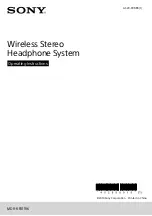
CG-EWCG-001
Wireless E911 Guide
Issue 3, January 6, 2004
BellSouth Wireless E9–1–1/SS7 Interconnection
Guide
The WSP (or their agent) must have the ALI database pre-populated with records matching the pANIs
(ESRD/ESRK) they will use, or the call will default route, and the PSAP will receive a "no record found"
rather than the expected location information.
A.6
Wireless CCS Network Interconnection Architecture
A.6.1
General Interconnection Information
Signaling System 7 - Common Channel Signaling using ISDN User Part protocol (SS7/ISUP) for Wireless
E9-1-1 is only supported for Type 2C trunks (interconnected directly to a BellSouth E9-1-1 tandem
switch) as defined in GR-145-CORE. The Type 2C trunks shall be dedicated for Wireless E9-1-1 traffic.
There will always be a minimum of two trunks per trunk group. Ideally, they should be provisioned in
a diverse manner so that a single network fault or incident would not render both trunks inoperable. In
sizing the new SS7/ISUP TG, Wireless Network Planners should build toward providing a P.01 Grade
Of Service (GOS) (see NOTE below).
NOTE:
The NENA document, NENA 03-006, RECOMMENDED PROCEDURES FOR E9-1-1 CALL
CONGESTION MANAGEMENT provides additional details regarding how to establish the proper
quantity of Wireless trunks into an E9-1-1 Tandem based on generally accepted "best practices". ( 03-006
is pending publication on the NENA web site at http://www.nena9-1-1.org as of March 25, 2003)
If a WSP elects to provide direct MF trunks to be used as backup in the event of an SS7 failure, BellSouth
can support such an arrangement. If MF backup is used, the quantity of MF trunks will be determined by
Wireless Network Planning practices, but in no case will it be less than two trunk members per Trunk Group
(TG). Since CAMA-MF only delivers a 7 digit pANI, CAMA-MF Trunk Groups are to be provisioned on a
per NPA basis. FG-D MF signaling allows for delivery of a full 10 digit pANI number, along with a full 10
digit CBN, so FG-D MF Trunk Groups can be provisioned to carry multiple NPAs as long as all default
routed calls should route to the same PSAP. CAMA-MF requires NPA specific trunk groups so the NDET
can "build" a 10 digit pANI upon receipt of only 7 digits across the NPA specific trunk group.
All trunk groups (primary and back-up) must take into account that only ONE default PSAP can be
associated with an E9-1-1 Trunk Group. It is imperative that the Wireless Network Planner keep this in
mind when determining how many trunk groups will be needed for service in any given area.
THAT DECISION CAN HAVE SIGNIFICANT IMPACT ON PSAPs.
As mentioned above, when sizing the new SS7/ISUP TG, Wireless Network Planners should build toward
providing a P.01 GOS. The size of the backup MF TGs shall be a minimum of two, but otherwise may
not necessarily achieve a P.01 GOS, since they are not expected to be frequently called upon. They are
after all - ONLY INTENDED FOR BACKUP!
A.6.2
Wireless Phase 1 vs. Phase 2
It is VERY important that all parties understand that differences of opinion (currently) exist in regard to
the meaning of certain terms used in the Wireless E9-1-1industry at large. Most are just slight nuance
differences, but if two or more people use the same term to mean different things it causes confusion. This
section will attempt to clarify how BellSouth interprets certain Phase 1 and Phase 2 terms, especially in
Page 81
Summary of Contents for E911
Page 1: ...Customer Guide CG EWCG 001 Issue 3 January 6 2004 Wireless E911 Guide...
Page 10: ...Wireless E911 Guide CG EWCG 001 Introduction Revision History Issue 3 January 6 2004 Page 10...
Page 24: ...Wireless E911 Guide CG EWCG 001 Issue 3 January 6 2004 Page 14 Blank...
Page 32: ...Wireless E911 Guide CG EWCG 001 Issue 3 January 6 2004 Page 22 Blank...
Page 78: ...Wireless E911 Guide CG EWCG 001 Issue 3 January 6 2004 Page 68 Blank...
Page 82: ...Wireless E911 Guide CG EWCG 001 Issue 3 January 6 2004 Page 72 Blank...
Page 84: ...Wireless E911 Guide CG EWCG 001 Issue 3 January 6 2004 Page 74 Blank...
















































